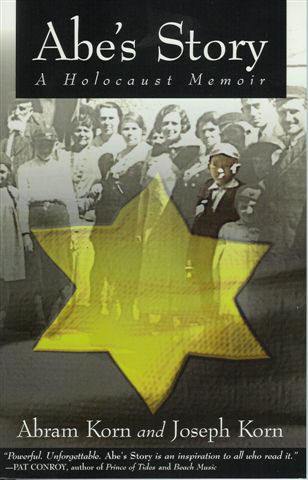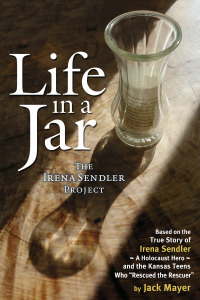Book Chapters
1. Before the War | 2. War in Europe
3. Darkening Skies | 4. The “Final Solution”
4. Part 2 “THE FINAL SOLUTION” | 5. Liberation & Beyond
anti-semitism:
Prejudice or discrimination against Jews.
Arrow Cross party:

A Hungarian fascist party and movement, formed in 1937. Ferenc Szálasi was the party’s founder and leader. Until the outbreak of war, the Arrow Cross party was largely considered an extremist fringe party, a collection of misfits.
In the 1939 national election, the Arrow Cross won 25% of the vote and became the most significant opposition party.
After Horthy’s attempt to sign a separate peace failed on October 15th, 1944, the Arrow Cross came to power. Their brutal, murderous reign ended in January 1945 when the Soviets liberated Budapest.
Auschwitz:
The largest and harshest nazi death camp, located in the southwest of Poland. Originally used as a concentration camp in 1940 (after the defeat of Poland), it became a death camp in 1942.
The camp included: Auschwitz I (Stammlager); Auschwitz II (Birkenau), the most populated extermination camp; and Auschwitz III, the I.G. Farben labour camp (also known as Monowitz or Buna).
As victims arrived by train from all over Europe, they were separated into two lines: men to be used as forced labour; women and children, who were to be killed in the gas chambers that day, or in a mass grave.
As many as 6 000 ruthless SS officers worked at Auschwitz. It is estimated that one and a half million men, women and children were murdered there, making it the largest graveyard in human history.
Auschwitz was liberated by Soviet soldiers on January, 27th, 1945.
death marches:
Forced marches of prisoners under heavy guard to evade the advancing Red Army. Jewish prisoners were marched deeper into nazi-held territory, often with no clear destination in mind.
Many prisoners died of disease, mistreatment or exhaustion, and were simply left where they fell.
 Eichmann, Adolf (1906-1962):
Eichmann, Adolf (1906-1962):
Adolf Eichmann is the SS officer who was responsible for the murder of millions of Jews. Born March 19th, 1906, in Austria, he joined the Austrian Nazi party in 1932.
As an SS lieutenant colonel, he headed the Jewish office of the Gestapo and was largely responsible for carrying out the “final solution.”
He once said: “I will leap laughing to my grave because the feeling that I have five million people on my conscience is for me a source of extraordinary satisfaction.”
After being arrested at the end of the war, Eichmann escaped from an internment camp in 1946 and disappeared. The Israeli secret service found him in Argentina in 1960 and took him to Israel. His trial attracted attention around the world.
Charged with committing crimes against the Jewish people, crimes against humanity and war crimes, this nazi war criminal was found guilty and hanged on May 31, 1962.
See also Adolf Eichmann documentary here.
extermination camps:
After World War II started in 1939, some concentration camps were transformed into sites for carrying out genocide.
These camps, all in occupied Poland, are sometimes called “death factories.”
Many Jews were killed in the gas chambers of the extermination camps, as well as tens of thousands of Gypsies, homosexuals, political prisoners, Jehovah’s Witnesses and Soviet prisoners of war. Prisoners managed to organize uprisings in a number of camps.
“Final Solution”:
Hitler’s plan, executed by Adolf Eichmann, to eradicate all of Europe of people of Jewish ancestry.
gendarmes:
The policemen in the Hungarian countryside and small towns, modeled after the old Imperial police.
The unit leaders were extremely right-wing, anti-semitic officers, under whose direction many atrocities were committed against the population.
The police force (or Gendarmerie) played a key role in enforcing anti-Jewish measures, expropriating Jewish property, and rounding up, placing in ghettos, deporting and torturing Jews.
gentile:
A gentile is anyone who is not a Jew.
ghetto:
During World War II, a section of a city in which Jews were required to live.
Residents of the ghetto were barred from engaging in any activity outside of the ghetto, including visiting and shopping.
Haggadah:
The narrative of the Israelites’ Exodus from Egypt is read at the Seder on the first two nights of Passover.

Horthy, Miklós (1868-1957):
Born in 1868, Miklós Horthy was the regent of Hungary between 1920 and 1944.
He was the military leader of the “White Terror” of 1919, a counterrevolutionary campaign against the socialist regime of Béla Kun.
After the occupying Romanians were evacuated, Horthy became regent of Hungary on March 1st, 1920.
Foreign and domestic policies between the wars were motivated by a fervent desire to recover territories the country had lost in the Trianon settlement of 1920.
Although Horthy authorized a series of harsh anti-Jewish laws, he resisted Hitler’s pressure to ban Jews from all economic activities, to gather Jews into ghettos or to deport Jews to camps.
After German forces occupied Hungary in March, 1944, Horthy nominated a pro-German government that was given total control of anti-Jewish measures.
On July 7th, after half a million Jews had been deported and under pressure from Allied countries such as Sweden and the United States, Horthy ordered that the deportation of Jews stop.
When Horthy attempted a separate armistice for Hungary on October 15th, 1944, he was ousted and replaced by Ferenc Szálasi. After the war, the allies allowed Horthy to go to Portugal.
Jewish Council:
Jewish Councils were created by the Nazis to administer Jewish ghettos. Such councils, called Judenräte, were set up throughout German-occupied Europe.
Judeo-Bolshevik:
Judaism and Bolshevism (or Communism) were equated by the Nazis and their propaganda machine.
Defending Christianity from the Bolshevik Antichrist therefore became an anti-semitic crusade.
kashrut:
Jewish laws concerning diet and keeping kosher. Within the laws of kashrut, all foods fall into one of three categories:
1. milchig (dairy products or foods containing dairy products);
2. fleischig (meat products or foods containing meat products); and
3. pareve (foods which are neither milchig nor fleischig, such as fish, fruits, vegetables).
Milchig and fleischig cannot be eaten at the same meal.
kiddush:
a Jewish prayer for blessing the wine or bread on a holy day.
Kristallnacht:
On November 9th and 10th, 1938, Nazis terrorized Jews throughout Germany and Austria. 30,000 Jews were arrested and sent to concentration camps; 91 were killed.
Thousands of Jewish shops, businesses and homes were looted and pillaged, and over 1000 synagogues were destroyed.
Because the streets were covered with broken glass from the looting, this night came to be known as Kristallnacht, which means Night of the Broken Glass.
Two days earlier, Ernst von Rath (Third Secretary of the German Embassy in Paris) had been shot by a Polish Jew. The assassination was used as an excuse by the Nazis for their long-since planned pogrom.
Three days after Kristallnacht, the Nazis decided that Jews would have to pay for the damage they had provoked.
Luftwaffe:
The German air force.
Mein Kampf:
A book written by Adolf Hitler in 1924 – years before he came to power in Germany – in which he outlined his philosophies and beliefs.
Pesach:
The Hebrew word for Passover, the Jewish holiday that commemorates the Hebrews’ liberation from slavery in Egypt.
Red Army:
The official name of the army of the Soviet Union during World War II.
seder:
A service and ceremonial dinner held on the first or first and second evenings of Passover in commemoration of the Hebrews’ exodus from Egypt.
shtetl:
A word given to a small town or village where Jews settled in Eastern Europe. The shtetl represents the site of a 500-year-old Jewish European culture.
SS:
Originally, the SS acted as Hitler’s bodyguards. As the organization grew, it became the Third Reich’s principal instrument of terror, and the body responsible for murdering the Jews of Europe.
sukkah:
A temporary shelter with a roof of branches and leaves that is used (especially for meals) during the Sukkoth holiday. Originally, these shelters were used by Jews as they travelled to the Promised Land.
Once in Jerusalem, the city became so crowded during harvest time that such structures were also erected in and around the city.
Sukkoth:
A Jewish harvest festival, lasting seven days, in remembrance of the Jews who lived in temporary shelters as they travelled to the Promised Land.
Szálasi, Ferenc (1897-1946):
The leader of the Hungarian fascist Arrow Cross party. On October 15th, 1944, he replaced Horthy as head of state with the help of the Germans.
Szálasi’s brutal and murderous regime lasted until the end of the war.
When the war ended, he was captured by the Americans and extradited to Hungary. Found guilty of war crimes and crimes against the people, he was executed on March 12, 1946.
Trianon Peace Treaty:
An agreement signed at the end of World War I in Versailles.
Hungary lost roughly 2/3 of its territory and 3/5 of its population.
It lost large territories to Czechoslovakia, Romania and Yugoslavia, and smaller ones to Poland, Austria and Italy.
 Wallenberg, Raoul (1912-1947):
Wallenberg, Raoul (1912-1947):
A Swedish diplomat who led a rescue operation that saved the lives of approximately 100 000 Jews in Hungary. He is one of the great heroes of World War II.
Appointed first secretary of the Royal Swedish Legation in Budapest in June 1944, Wallenberg’s mission was to rescue Jews from Nazi persecution.
With the help of several hundred Jewish co-workers, he issued thousands of Swedish passes to protect Jews from the Germans and Hungarians.
He erected approximately 30 “Swedish houses” in Budapest which were declared Swedish territory, providing shelters where Jews could seek refuge.
Before long, the population in these houses reached 15 000. Wallenberg’s initiatives influenced other legations in Budapest to offer similar protections.
Raoul Wallenberg also rescued hundreds of Jews from Eichmann’s death marches.
He saved approximately 100 000 Jews in Budapest’s two ghettos from a joint SS/Arrow Cross plan to blow them up right before the city was liberated.
After liberation, Wallenberg was summoned by the Soviets -who were very suspicious of the Swedish mission -to army headquarters in Debrecen.
On January 17th, 1945, he was escorted back to Budapest by two Soviet soldiers, and was overheard saying that he didn’t know whether he was their guest or prisoner. That same day, he disappeared.
In 1956, the Soviets informed Sweden that they had discovered a report saying Wallenberg died in a Soviet prison in 1947.
Zionism/Zionists:
Zionism is an international movement, originally for the establishment of a Jewish homeland in Palestine, and later for the support of modern Israel.
A Zionist is an advocate or supporter of Zionism.
In the 1930s, there were several small Zionist youth movements in Hungary. These grew when Hungary reoccupied the territories it had lost after the World War I.
They grew further after each wave of anti-semitic laws, and when Jewish refugees arrived after 1942.
These youth movements played an important role in the Hungarian resistance, creating false identification papers, getting news out about what was happening in nazi-occupied countries, rescuing Jews, smuggling refugees across the border to Romania, and setting up homes to protect thousands of Jewish children and adults.
Book Chapters
1. Before the War | 2. War in Europe
3. Darkening Skies | 4. The “Final Solution”
4. Part 2 “THE FINAL SOLUTION” | 5. Liberation & Beyond
Related Posts
House of Terror Museum Visit in Budapest, Hungary | Nazi and Soviet Headquarters



